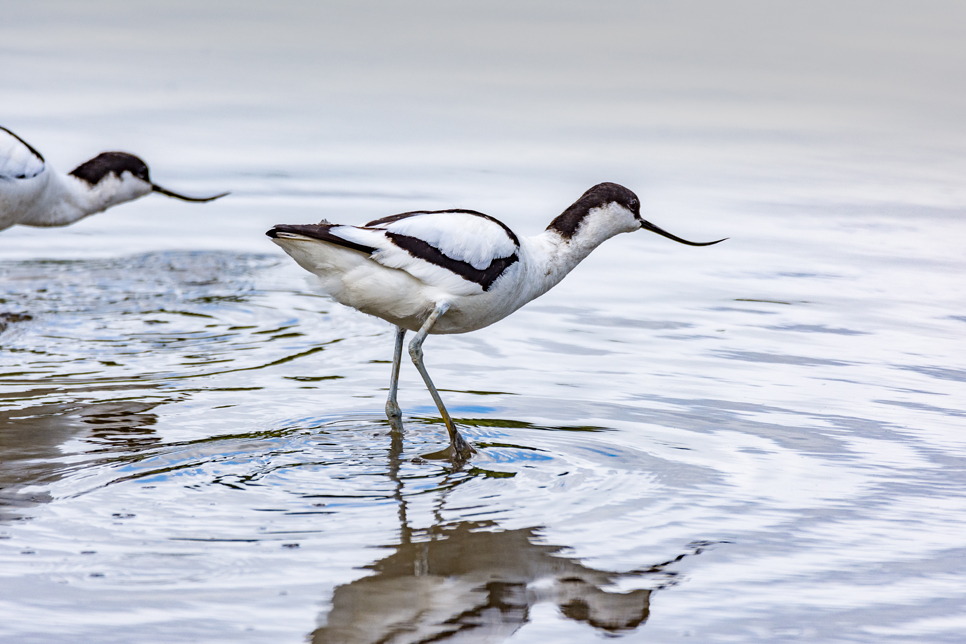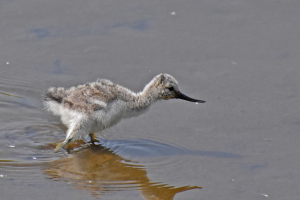Eyes on the skies for returning avocets

From their unexpected first appearance in June 2006, to their earliest ever arrival on February 16 2019, the buzz surrounding our avocets builds each year.
 These striking black and white waders may look dainty, with their slim upturned bills and delicate legs, but boy, are they tenacious.
These striking black and white waders may look dainty, with their slim upturned bills and delicate legs, but boy, are they tenacious.
They return to Wader Lake each breeding season, having overwintered anywhere from estuaries on the South coast to places as far away as Spain and Morocco, and are often met with harsh weather conditions, but soon set about courting unperturbed.
The shingle islands of our lake were created especially to provide vital breeding and nesting habitat for a range of bird species and after pairing off, the avocets set up home here beneath our grey heron colony, as a way of protecting their young from predators vicariously.
This is a risky bet, given that the herons will also soon have hungry mouths to feed, but worth it on balance and if you’ve ever seen a feisty adult avocet ward off a potential threat to its brood, you might argue that they don’t need such help!
In heavy spring rain, the islands can also flood, sweeping away nests and eggs in the process, but if it’s early enough in the season, the undaunted adults will lay again.
 This determination against the odds seems fitting for a bird which first colonised Britain in the 1940s, when coastal marshes in East Anglia were flooded to provide a defence against possible invasion by the Germans. The subsequent increase in numbers is one of the UK’s most successful conservation and protection projects.
This determination against the odds seems fitting for a bird which first colonised Britain in the 1940s, when coastal marshes in East Anglia were flooded to provide a defence against possible invasion by the Germans. The subsequent increase in numbers is one of the UK’s most successful conservation and protection projects.
So with February underway and the weather seemingly mild (for now!), it’s all eyes on the skies to see when these remarkable birds will make their welcome return this year…
Did you also know?
- Avocets are carnivores and feed by thrusting their long, thin bill underwater and swinging it side to side along the bottom to stir up aquatic insects.
- On July 27 2010, a pair of avocet colour-ringed at WWT Washington that June were sighted and reported at Cley NWT reserve in Norfolk (270km away and 38 days post-ringing).
- The name ‘avocet’ has its origins in the Italian word, 'avosetta'. The word refers to long-legged birds of the shore with an upturned bill.
- Their mating behaviour is very elegant – beginning with vigorous preening, before the female stops still and the male quickly moves from side to side behind the female, dipping his bill in the water. After copulation, they run forward together with bills crossed, the male with one wing over the female’s back. Finally, they run away from each other in a hunched posture.
- On October 7 2010 a single bird with colour rings (later identified as ring number ET65453) was sighted at Salinas la Tapa, El Puerto Real, Cadiz, SPAIN.The bird had travelled an amazing 2077km in the 110 days after ringing!



